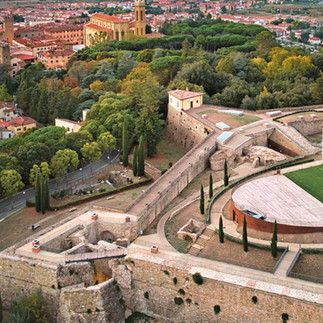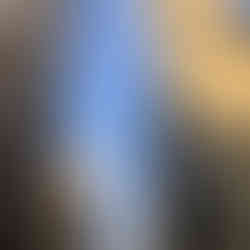Travel: Arezzo, Italy, 3/22-23/2024
- Lili Naveh
- Mar 23, 2024
- 5 min read
Updated: Apr 15
This post is a continuation of a trip North of Rome along the Western coast of Italy.
Civitavecchia -3/6-7 (part 1) Carrera. 3/12. (part 5). Bocasessa. 3/21 (part 9)
Lucca. 3/11-12 ( part 4). Genoa. 3/16- 21. (part 8)

The time we spent in marvelous under- rated Genoa (post here) was fabulous , However we needed to move on...
Reluctant to drive about 6 hours back to Rome, it was decided to drive only half of the way, and spend the night in charming medieval Arezzo

The drive on the fast highway maneuvers in and out through many long tunnels, so the views are hidden and and in any case most of the trees were still lief-less

Located south of Florence in Toscany Arezzo -the capital of the same named province, is a town of about 100,000, set on a steep a hill, along via Cassia, which during the Roman era played a crucial role and was well-known for its pottery.

It was also known as "Etruscan capital", and in current times the
"city of gold" and of the high fashion.


Another underrated hidden gem town surrounded by rolling countryside,
Arezzo was a major town in the Etruscan federation, thanks to its strategic position on a hill at the meeting point of three valleys.
Arezzo's medieval layout can still clearly be traced as the map indicates, along
the surrounding old walls and defensive bastions.
Unfortunately, the medieval city center was heavily destroyed during World War II, but a lot of monuments and works of art luckily remain to this day
Arezzo built its fortune on gems. Gold, in particular, has brought wealth to Arezzo since Etruscan times and the city is still popular for lovers of fine jewellery.
it’s a wealthy commercial centre, is dotted with jewellers, goldsmiths and antique shops

At the upper part of the town, which its medieval appearance reflects
the Cathedral San Donato, the Grand square, and the 16c Medici Fortress
A pedestrian street called Corso Italia dotted with many fashionable boutiques, antique shops and restaurants, is the main old center's artery leading up to the main square,


The Piazza Grande is the most noteworthy medieval square in the city consisting of a mix of architectural styles, It opens behind the 13th c Romanesque apse of Santa Maria della Pieve. where also the Town Hall Communal Palace (Priori palace 1333) is
Culturally, the city belongs to Piero della Francecsa, who was an Italian painter, mathematician and geometer of the Early Renaissance and who has most left his mark on Arezzo.

Other Buildings on the Square
Logge Vasari (1573) Church of San Francesco Palazzo della Fraternita
In 1384, Arezzo was annexed to the Tuscan state dominated by Florence, and during the following centuries the Florentine influence became visible in its architecture
In 1560, Piazza Grande changed radically, at the behest of Cosimo I de’ Medici. As a demonstration of the strength of the Florentine lordship, he demolished Palazzo del Popolo, Palazzo del Comune and other buildings located in the northern part of the square. The new layout of the square was designed by Giorgio Vasari, born in Arezzo itself in 151, who started Palazzo delle Logge in 1573, one year before his death. The palace was completed in 1595 by the architect Alfonso Parigi.
Museo di Casa Vasari
The building at 55 via XX Settembre is

the family home of the painter, art historian and architect Giorgio Vasari. who bought this building in 1541 and personally oversaw its renovation and decoration.( 1542 to 1548)

The artist lived in the house for a few months (1550) until new work commitments forced him to move to Rome and later to Florence.
Richly decorated with frescos and a priceless collection of Mannerist paintings, the interiors are a testimony to the highest expression the few preserved examples of a late 16c Renaissance artist's house, arranged on three floors and equipped with a roof garden.
More on Piazza Grande Square
Every first weekend of the month, piazza Grande hosts the famous antiques fair, an institution in Arezzo. The piazza also hosts annually the Middle Ages game of chivalry - Giostra del Saracino,

The piazza is known from the haunting site where the 1977 Oscar winning Italian comedy-drama film
"Life is Beautiful" by Roberto Benigni: was shot. Right here in Arezzo. with posts
on many buildings' walls noting this fact.

The film was about an open-minded Jewish waiter and his son who become victims of the Holocaust, thus the father uses a perfect mixture of will, humor and imagination to protect his son from the dangers around their camp.
Arezzo has been always an home to artists and poets who lived in its province , as was the Renaissance artist Michelangelo.
The city is also famous for the church frescoes by Piero della Francesca
From the towers and square at the upper town, the main streets branch off towards the lower part as far as the medieval structures, at the start of Corso Italia
Other Buildings on the lower part of town
Poste & Telegram Building Theater Petracara (1828). Public Library- once a prison
The Public Liberty is set inside the Palazzo Pretorio along Via dei Pileati.
The structure is a result of unification of 13c buildings that belonged to the Arezzo Guelph families of Albergotti, Lodomeri and Sassoli.
From 1290 Palazzo Albergotti was the seat of the Capitano di Justizia and for centuries housed various magistracies.
The coats of arms decorating the building's front is of podestà, captains, commissioners and vicars chosen by Florence to govern the city.
The part referring to Palazzo Sassoli was used from the early 15 c as a prison, between 1600 and 1926
On the Saturday morning's early walk, before we continued the drive to Rome,
we encountered a group of about 300 cycleres on a tour of Italian quaint small
cities, ready to hit the road on their bicycles
Gold Rush...
Known for being a hub of Gold jewelry Design, I discovered a Gold Museum

UnoAErre Jewelry Museum
Loc, S. Zeno Str. E, Arezzo
Appointment by calling +39 575925953. +39 0575 9251 outlet1@unoaerre.it
Unfortunately the museum was closed on Saturday, but the outlet jewelry store
was opened that day until 1:00pm, so it was definitely worth a visit.
I was amazed to discover that
UnoAErre Italia is a goldsmith, jewelry and watchmaking company, founded in 1926 by Leopoldo Gori and Carlo Zucchi, 2 Jewish partners who were based in Arezzo, and who at the time applied innovative industrial methodologies to gold-smithing, thus minimizing the costs of metal work.
The company which was long sold to its current operator, has manufactured, distributed and exported gold and jewelry in Italy and abroad, since then
The firm also operates a museum since 1988 with works of the artists who have collaborated in the production of its jewelry, including Pietro Cascella, Salvador Dalí and Salvatore Fiume.
Hotel we stayed in the historical center just off Piazza Monaco at the lower town


Via Guido Monaco, 54,
A modest pleasant hotel, within walking distance to the upper medieval part of town, and great friendly service


Antica Fonte Restaurant
Via Porta Buia 18. 057528038 3334621295 anticafonte@alice.it
5 minutes awaking distance from the hotel.
.Creative tasty food.
To be continued....















































Comments